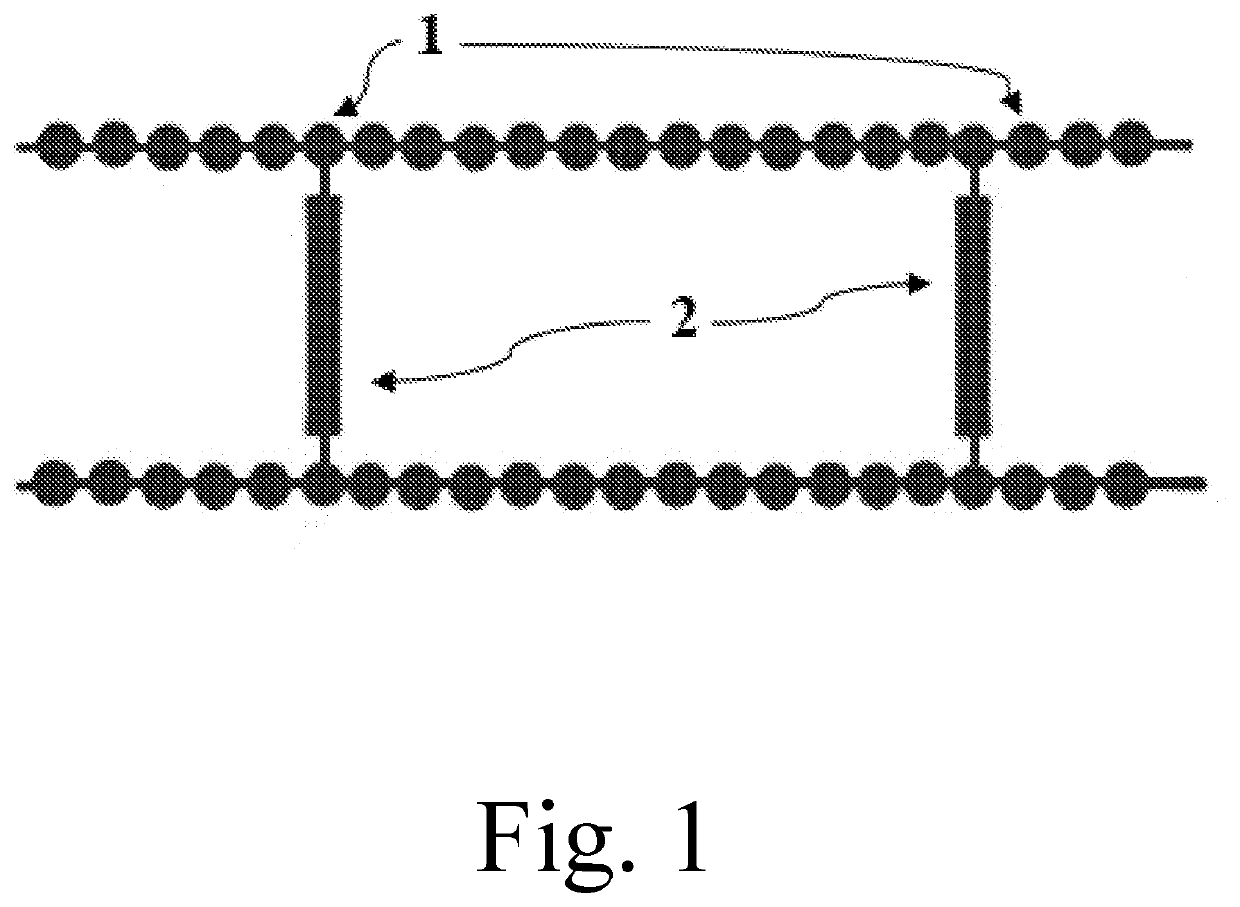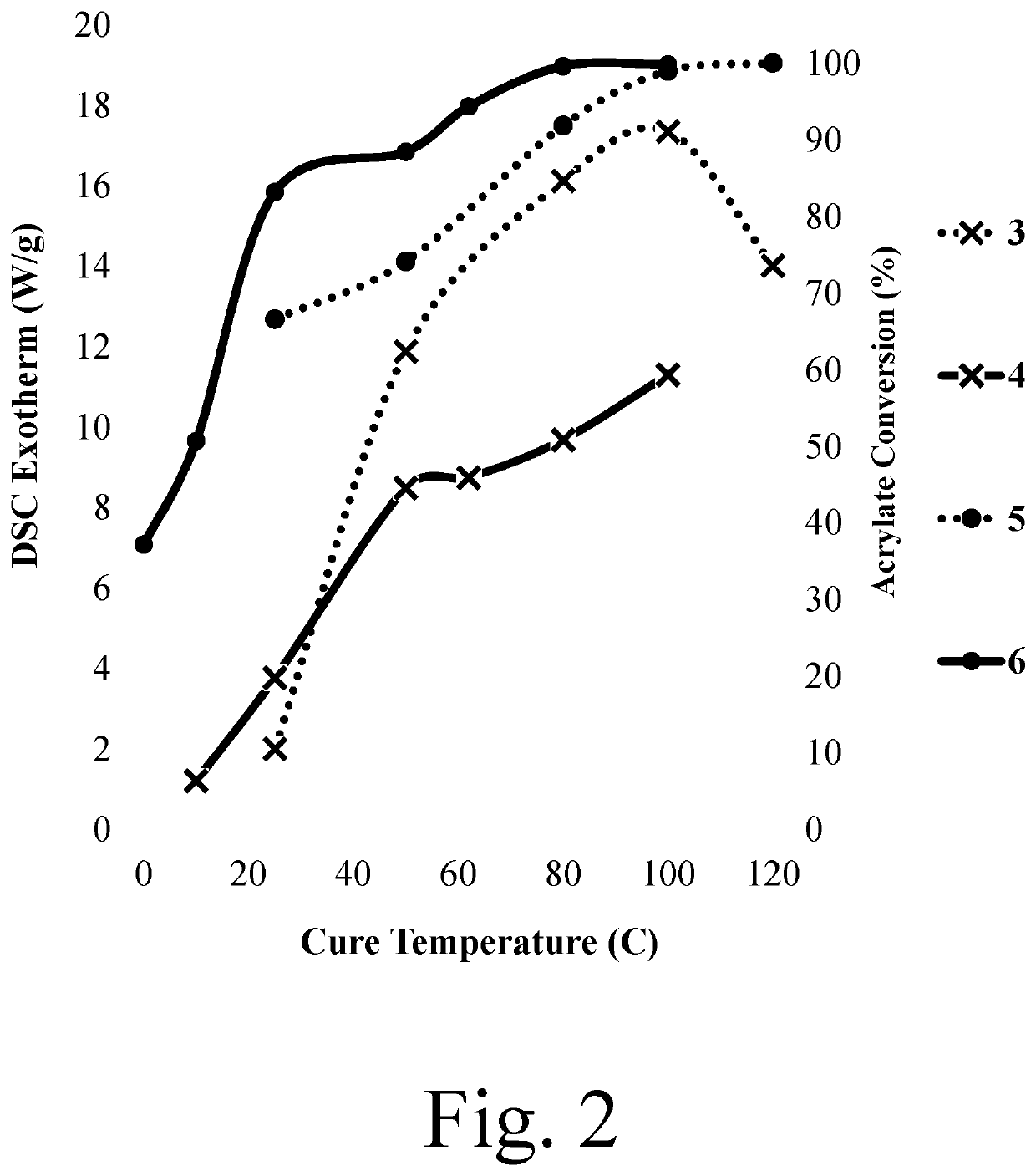Radiation curable compositions for additive fabrication
a technology of additive fabrication and composition, which is applied in the direction of manufacturing tools, photomechanical equipment, instruments, etc., can solve the problems of long-term liquid stability problems, relative high activation energy, and lack of biocompatibility
- Summary
- Abstract
- Description
- Claims
- Application Information
AI Technical Summary
Benefits of technology
Problems solved by technology
Method used
Image
Examples
examples
[0147]These examples illustrate embodiments of the radiation curable compositions for additive fabrication of the instant invention. Table 1 describes the various components of the radiation curable compositions for additive fabrication used in the present examples. Tables 2A and 2B, meanwhile, describe the various sub-components used to synthesize the oligomers referred to in Table 1 and used in the present examples. Table 3 lists the compositional make-up of each of the formulations evaluated herein. Finally, Tables 4A, 4B, and 4C describe various performance characteristics of one or more of the formulations used herein.
TABLE 1Function inComponentFormulaChemical DescriptorSupplierOligomer C4 (“C4”)OligomerDifunctional urethane methacrylate oligomer;DSMMn 1367 Da, PDI = 1.42Oligomer A1 (“A1”)OligomerDifunctional urethane methacrylate oligomer;DSMMn = 1200 Da, PDI = 1.89Oligomer E2 (“E2”)OligomerDifunctional urethane methacrylate oligomer;DSMoligomer Mn = 1400.8 Da, PDI = 1.61Oligo...
PUM
| Property | Measurement | Unit |
|---|---|---|
| Tg | aaaaa | aaaaa |
| Tg | aaaaa | aaaaa |
| yield stress | aaaaa | aaaaa |
Abstract
Description
Claims
Application Information
 Login to View More
Login to View More - R&D
- Intellectual Property
- Life Sciences
- Materials
- Tech Scout
- Unparalleled Data Quality
- Higher Quality Content
- 60% Fewer Hallucinations
Browse by: Latest US Patents, China's latest patents, Technical Efficacy Thesaurus, Application Domain, Technology Topic, Popular Technical Reports.
© 2025 PatSnap. All rights reserved.Legal|Privacy policy|Modern Slavery Act Transparency Statement|Sitemap|About US| Contact US: help@patsnap.com


